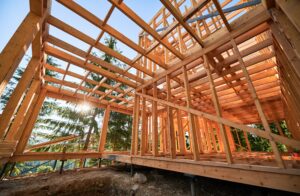
Green Building Materials: Revolutionizing Sustainability in Construction Sites
The construction industry is by far one of the most massive consumers of raw materials with the potential to become more sustainable. Modern construction sites have been evolving to become greener and more eco-friendly ever since the world became increasingly aware of environmental concerns. A significant part of this evolution is the adoption of green building materials, which are revolutionizing the way we construct our buildings and infrastructure.
Some traditional construction materials, such as concrete and steel, have been the backbone of the industry for decades. However, these materials come at a significant environmental cost. Concrete production, for example, is a major source of carbon dioxide emissions. To combat these issues, construction companies are turning to innovative green building materials.
Green building materials are those that have a reduced impact on the environment throughout their lifecycle. They are sourced, manufactured, and used with the goal of minimizing harm to both human health and the planet. There is a reason why construction workers are trained with the proper construction first aid to prevent medical emergencies. Here’s how these materials are transforming construction sites:
- Reduced Carbon Footprint:
One of the primary advantages of green building materials is their ability to lower the carbon footprint of construction sites. For instance, engineered wood products like cross-laminated timber (CLT) are replacing traditional lumber and concrete for framing and structural applications. CLT production consumes fewer resources and releases significantly less CO2, making it an environmentally friendly alternative.
- Energy Efficiency:
Green materials often possess superior thermal properties, aiding in the construction of energy-efficient buildings. Insulating materials like recycled cellulose and spray foam insulation provide excellent thermal resistance, reducing the energy required for heating and cooling. This, in turn, lowers a building’s long-term operational costs and energy consumption.
- Sustainable Sourcing:
A crucial aspect of green building materials is their sourcing. Materials like bamboo, which is a rapidly renewable resource, have gained popularity for their sustainability. Recycled materials, such as recycled steel and glass, are also commonly used, diverting waste from landfills and reducing the need for new raw materials.
- Improved Indoor Air Quality:
Materials with low or no volatile organic compounds (VOCs) are often chosen to enhance indoor air quality in buildings. VOCs can have adverse effects on human health, and the use of low-VOC paints, adhesives, and finishes is essential for creating a healthier living or working environment.
- Longevity and Durability:
Green building materials are designed to last. For example, metal roofing materials have a longer lifespan than traditional asphalt shingles. Choosing durable materials reduces the need for frequent replacements, thereby conserving resources and reducing waste.
- Water Efficiency:
Green materials also extend to plumbing fixtures, where low-flow faucets, showerheads, and toilets are gaining traction. These fixtures reduce water consumption, leading to water savings and lower utility bills for building occupants.
- Waste Reduction:
Sustainability extends to the construction process itself. Modular construction, which involves the use of prefabricated components, reduces on-site waste and minimizes the environmental impact of construction. Additionally, innovative construction waste recycling programs are becoming more common, diverting waste from landfills.
As a result, green construction materials are undeniably revolutionizing sustainability at construction sites. By adopting these materials, the construction industry is reducing its environmental footprint, improving the energy efficiency of buildings, and enhancing the overall quality of construction projects. Moreover, the growing demand for green building materials is driving innovation and encouraging the development of new, even more sustainable options.
The construction industry plays a significant role in the global effort to combat climate change, and the integration of green building materials is a powerful step in the right direction. As these materials become more accessible and affordable, we can expect to see even more sustainable and environmentally responsible construction practices on the horizon. Globally, these revolutionary building materials are leading the transformation towards a greener and more sustainable future.